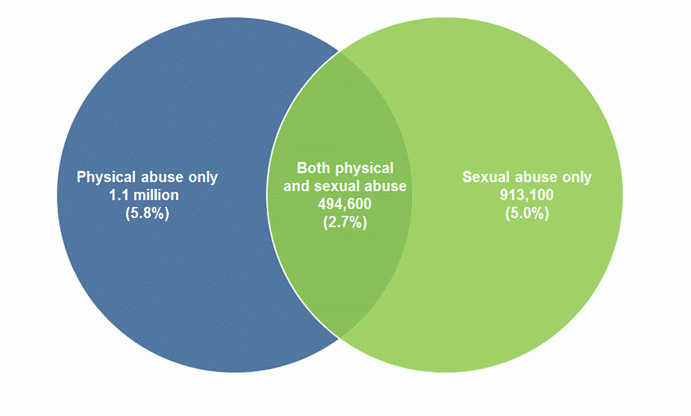Approximately 2.5 million Australian adults (13%) have experienced abuse during their childhood. This includes 1.6 million adults (8.5%) who experienced childhood physical abuse and 1.4 million adults (7.7%) who experienced childhood sexual abuse.
New analysis of the 2016 Personal Safety Survey childhood abuse data found that:
- The majority of persons who experienced childhood abuse knew the perpetrator and experienced multiple incidents of abuse;
- The age at which abuse commenced varied depending on the type of abuse experienced. The average age at which the first incident of abuse occurred was:
- 8.8 years for persons who experienced sexual abuse only;
- 8.1 years for persons who experienced physical abuse only; and
- 6.8 years for persons who experienced both physical and sexual abuse.
- Persons who experienced childhood abuse were twice as likely to experience violence as an adult compared to those who did not experience abuse (71% compared to 33%);
- Persons who experienced childhood abuse were three times more likely to experience partner violence as an adult than those who did not experience abuse (28% compared to 8.9%);
- Persons who experienced childhood abuse were more likely to report having a psychological or physical disability at the time of interview, than those who did not experience childhood abuse; and
- As adults, persons who experienced childhood abuse tended to have lower levels of educational attainment, income and life satisfaction, and were more likely to report financial stress and poor health.
Note: Adult violence is defined as any incident involving the occurrence, attempt or threat of either sexual or physical violence since the age of 15.
The PSS collects information from men and women aged 18 years and over about the nature and extent of physical and sexual abuse experienced before the age of 15.
